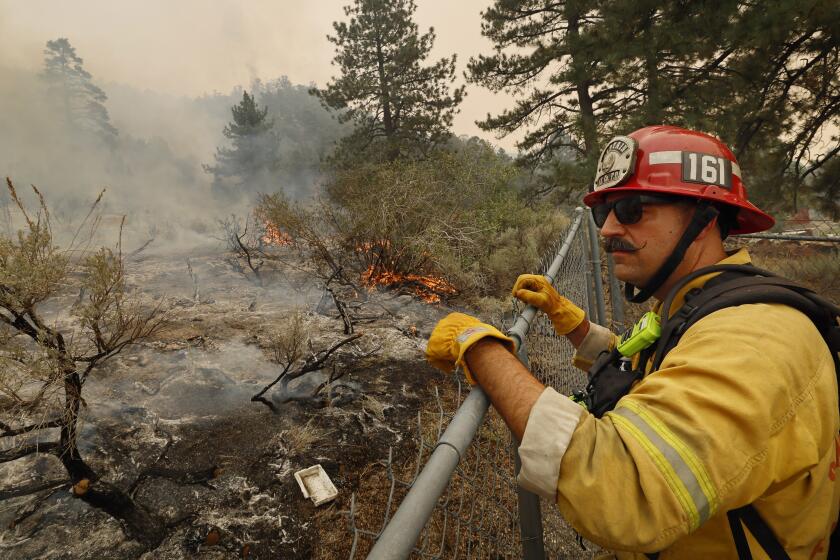County Makes a Plea for Flu Shots
Los Angeles County health officials Thursday made an urgent plea to healthcare providers to sell the county flu vaccine as they grapple with a threatened nationwide shortage of the medicine.
“We’ve offered to purchase the vaccines from those getting their full allotment ... at whatever price they paid,” said Public Health Director Jonathan Fielding, who intends to send letters or e-mails to 31,000 doctors and pharmacies making the request. Purchasing the drugs could cost the county hundreds of thousands of dollars.
The county, which provides the vaccines to people who can’t afford to pay, needs about 130,000 doses but has only 21,000 on hand, with limited prospects of obtaining more.
Some private providers, such as drugstores, supermarkets and doctors, did receive their full supply.
While seeking the vaccine, Fielding stressed that the shortage does not now represent a crisis and that people should not panic.
“This is a serious problem, but we’re not having an emergency,” he said. “There is no flu in L.A. County now. We might wind up having an uptick around Thanksgiving, but I’m worried some people are getting overheated.”
The predicted shortage has its roots in the decision of British regulators to suspend the license of a pharmaceutical plant in Liverpool because of manufacturing problems and possible contamination. The plant, which makes flu vaccine for Chiron Corp. of Emeryville, Calif., had expected to produce 46 million doses for the U.S. market.
The cutoff has prompted local health officials to urge private providers to ration the vaccine, offering it only to elderly people, young children and those with chronic conditions who are at greatest risk for illness.
But the county cannot force providers to ration, and officials remained concerned about whether those who get the vaccine from the county’s clinics will receive it this year.
Fielding said he aims to amass 130,000 doses, which would be equal to the amount the county distributed last year.
“I can’t tell you the likelihood of getting to that number,” said Fielding, noting that he had not received any offers to sell or donate vaccine yet.
The county has also received calls from doctors seeking vaccine for their patients and employees. Fielding doubts the county will be able to help them.
“I want to be realistic about it. There are tens of thousands of providers,” he said. “The best message is for doctors to work with other doctors to share it.”
News of the expected shortage prompted people to jam drugstores and pharmacies across Southern California, sometimes waiting in line for hours to get shots.
The lines continued Thursday. At a Longs Drug Store in Camarillo, more than 100 people lined up for shots, with store workers giving the vaccine only to people who declared they were in the “high-risk” groups. Many of those in the line were elderly, and a few said their doctors instructed them to get shots wherever they could find them.
Many companies and community organizations, meanwhile, canceled their scheduled flu shot clinics because their suppliers didn’t have the vaccine on hand.
Public health agencies across Southern California find themselves in the same position as Los Angeles. Ventura County was hoping to receive 16,000 doses but had none. Riverside County needed 25,000 but also had none. Orange County was expecting 50,000 doses but had only 6,000.
An estimated 2.8 million people in Los Angeles County are at the highest risk for complications from influenza, and Fielding estimates that about 50% of them received shots last year. He said he is “cautiously optimistic” about receiving an additional 26,000 doses from Aventis Pasteur, the only other drug manufacturer that makes the vaccine for the U.S. market. He said the company had confirmed the order but not yet delivered.
Each year, more than 200,000 Americans are hospitalized and more than 36,000 die from flu-related illnesses, 95% of them seniors.
Times staff writer Catherine Saillant contributed to this report.
More to Read
Sign up for Essential California
The most important California stories and recommendations in your inbox every morning.
You may occasionally receive promotional content from the Los Angeles Times.










